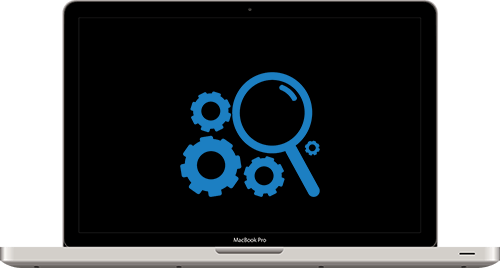Got some Mac issues? Check out how to run diagnostics on Mac in this new post!
Contents: Part 1. What is Apple Diagnostics?Part 2. How to Run Diagnostics on Mac?Part 3. What are the Common Hardware Failures?Part 4. How to Maintain a Healthy Mac?Part 5. Conclusion
People Also Read:How to Use Mac Disk Utility to Repair Disk?How to Defrag A Mac
Part 1. What is Apple Diagnostics?
Apple diagnostic is an essential tool in Mac which verifies and troubleshoots all the hardware components. It determines which part of the hardware is malfunctioning and will provide resolutions after the diagnostics.
However, you may only run diagnostics on Mac if you have determined and isolated the issue.

How to Isolate and verify Hardware issues on Mac?
In order to really get down to the root cause you have to do a lot of probing on the device. Such scenarios can be of great help in verifying hardware issues. Make a questionnaire and start answering each with complete details.
- What is the issue? – Does it show any error messages, any unexpected software behavior, or unusual hardware malfunction?
- When did it start? – Note if you can recall the first time it happened, what was the last thing you were doing before it started acting up. If there are intervals or sequences, note it down as well. Did it happen after doing any changes on the device? Does it happen on startup?
- Check Documentation – If the issue is application-based then you can check the ‘readme’ files included in it. If it’s a third party app, check the publisher’s site for any known issues.
Now that you have performed probing, try to go over the basic rules:
- Check for latest software/firmware update
- Perform a power cycle or a reboot
If you think this is a hardware issue then you can run diagnostics on Mac. There is a built-in Apple hardware test aka diagnostics to identify the causes of the hardware.
Part 2. How to Run Diagnostics on Mac?
Now if you think that you are experiencing hardware failures, you have to really determine which hardware part you must troubleshoot.
It could be any from the CPU, GPU, disk/s, Memory, or overheating fan. It could also be other potential hardware failures.
If your Mac is from 2013 and earlier, you can find it as Hardware test but those using the latest models can see Apple Diagnostics.
To run diagnostics on Mac, follow these simple guides below:
- For those using iMac or desktop-based device, unplug any external devices connected to the device EXCEPT for the following: keyboard, mouse, display, and speakers
- Check the surroundings of the device. Make sure your Mac lies on a flat, hard and well-ventilated surface
- Power off Mac completely
- Turn it on immediately and upon booting, press and hold the D key from the keyboard. Keep holding until you see the screen asking for your preferred language. After it detects your language it will display a progress bar that begins the checking of your Mac
- The checking takes about 2-3 minutes. If there are any issues found by Apple Diagnostics, it will suggest you solutions and provide references codes. Noted down the reference codes before continuing
- Next, you have to select from the following options:
- To repeat the diagnostics, click”Run the test again” or press
Command + R - If you want more information, including details about your service and support options, click ”Get started” or press
Command + G - To restart the Mac, click Restart or press R
- To shut down, click Shut Down or press S
Part 3. What are the Common Hardware Failures?
Now that you have run the Apple diagnostics, you can further troubleshoot the device according to the suggested solutions.
But what do think are the causes of hardware issues on Mac and what are the common reference codes?
We have compiled the possible hardware problems that can risk your device and the error codes that you will find in the Apple Diagnostics.
- Video/graphics card (4YDC)
- External disk (4MHD)
- Processor (4PRC)
- Memory — RAM (4MEM)
- Hard disk and SSD (4HDD)
- Fans (4MOT)
- Logic board (4IRP)
- Wi-Fi — a failure of the AirPort wireless card (4AIR)
Unfortunately, most of these errors need an Apple specialist or technician. However, a few fixes can be self-help too such as resetting the PRAM and SMC.
This reset can possibly fix the fan and the logic board issues. You may also use the Disk Utility for fixing the Memory (RAM), hard disk and external drives.
Before you send your Mac over to the Apple store for repair, note that you need to take back up of all the files you have stored for security purposes.
We know that whenever you repair some hardware components, your device is always at risk of data loss.
Part 4. How to Maintain a Healthy Mac?
Sometimes your device acts up because there are too many things running together at the same time and it may clog up the memory. This will tend to slow down your device and gradually cause more possible issues.
To avoid Mac slowing down or poor performance, you need to get rid of the clutters and junks inside the system. You cannot just manually find these junks easily.
You need an effective program with proven results to remove the clutters, junks, and even corrupted apps and files.
Presenting, iMyMac PowerMyMac, Mac specialist software dedicaboostingo boost the performance of your device by scanning all junk-related contents. After seeing the displayed results, you can proceed with the removal of the junk files inside your system. It automatically detects unnecessary files, folders, caches and more.
After deleting all the junks and clutters from your Mac, check to see if the device is still running slow. Maybe all you need is a cleanup! PowerMyMac is free to download software you can install and run on the device. Let it scan to check and analyze your Mac health.
Part 5. Conclusion
We have finally learned how to run diagnostics on Mac. We hope that next time you are suspecting possible hardware issues on your device; you are now well-aware of the Apple diagnostics.
For better Mac performance and cleanup, use PowerMyMac. This is the best tool to keep handy on your system for any junk-related and clutters on Mac. Have you tried the Apple Diagnostics already?



